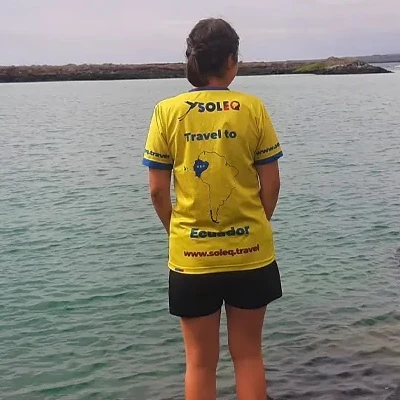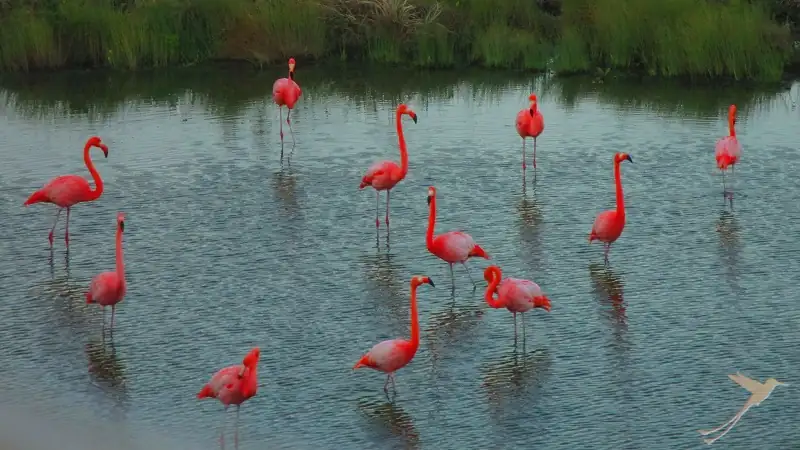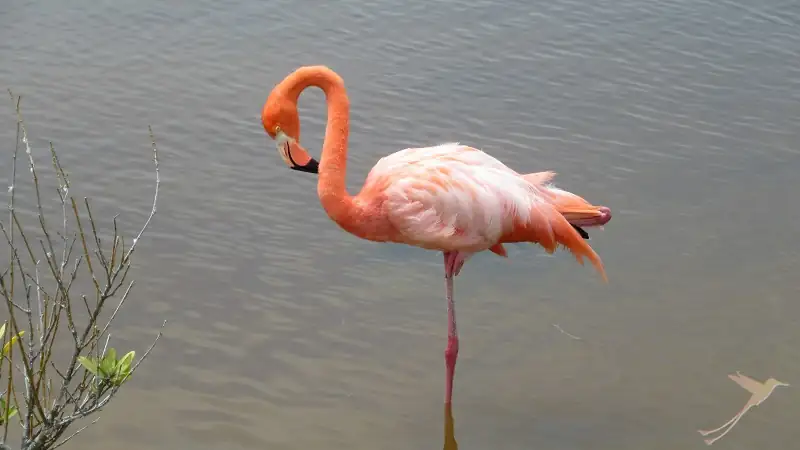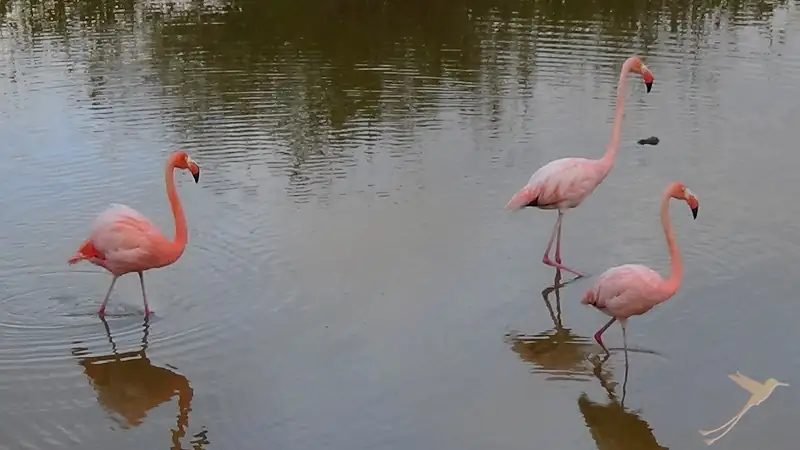
The archipelago in western Ecuador is one of the most famous in the world. On the one hand, because the flora and fauna served Charles Darwin as the basis for his theory of evolution, on the other hand, because the islands are fantastically beautiful in addition to the great diversity. If you want to escape from everyday life and spend your vacation in a paradise, the Galapagos Islands are the right place for you! As already mentioned, the archipelago is endowed with numerous species, so the pink flamingos are also among the native species of Galapagos!

The Cuban flamingo, which is native to the archipelago, grows between 1.30 m and 1.45 m and has a life expectancy of 40 years. It is characterized by its pink coloration, which is caused by a pigment that the birds pick up while feeding in the salty coastal lagoons. The Cuban flamingo is distinguished from the other five species of flamingos that live elsewhere on Earth primarily by its bright pink plumage. Their specially shaped beak, which is colored black at the tip, enables them to filter-feed their microscopic prey. Also, unmistakable are the long, thin, pinkish-red legs. These carry a weight of 2 kg to 3 kg, depending on size and sex. Additionally, the Galapagos flamingo has the longest legs and neck in relation to its body compared to any bird species known in the world. Flamingos are additionally known to stand on one leg for long periods of time. This position looks strenuous at first but is relaxing and energy-saving for the animals. For this reason, they are especially often seen standing this way. Unlike other flamingo species, Galapagos flamingos live in quite small colonies.

Habitat, diet and reproduction
Primarily, the flamingos are found on the islands of Isabela, Santiago, Floreana, Rábida and Santa Cruz. Their habitat are saline lagoons, from which they obtain their food.
As omnivores, their diet consists largely of crabs, insect larvae, microorganisms, and algae. They obtain their food by disturbing the water with small movements, stirring up prey that they can then eat. Their beak is a kind of filter. It selects prey from mud and water, ensuring that only food reaches the stomach. Galapagos flamingos live monogamous lives. Once they choose a mate, they never change it. The nests are built on the shores of coastal lagoons. They consist of a mud cone about 20 to 25 cm high. To construct the nest, the Galapagos flamingo uses mud, feathers, stones, and straw. After the mating season, the female usually lays only a single, chalk-white egg, which both parents incubate for 28 to 32 days. The breeding season begins around May and ends in August. So, if you want to see impressive flamingo courtship dances, you should visit the Galapagos during this period. Once hatched, the chick is fed by both parents. The chick’s beak is straight at first but begins to curve when they are about three weeks old. After 6 years, the flamingo is considered sexually mature and begins to reproduce further.

Endangerment
Galapagos flamingos are in the “endangered” category on Ecuador’s Red List, as they are the species with the smallest total population of flamingos in the world. Currently, populations are estimated at only 320 to 550 individuals and annual population counts have been conducted since 1967 to immediately detect and counteract further declines. Fortunately, thanks to the archipelago’s protected status, this is not the case. Natural enemies of Galapagos flamingos include introduced vertebrate species, including cats, pigs, goats and rats. However, climate change and the related “El Niño” phenomenon are also threatening their habitat through increasingly frequent flooding. This is causing a decline in their reproductive success and forcing the birds to move to other waters within the archipelago. Humans also affect the lagoons where these flamingos live by depositing trash and litter or using them as sewers.

The pink Galapagos flamingos are impressive and well worth seeing because of their uniqueness. If you would like to see the pink glowing animals in their natural habitat, feel free to drop our team a line. In case you would like to see other regions of Ecuador, such as the coast, the Andes or the Amazon rainforest, we are also at your disposal. We will discuss your wishes with you and take over the further travel planning for you, so that you can start your Ecuador adventure carefree.







